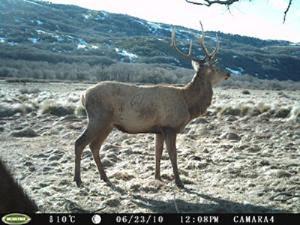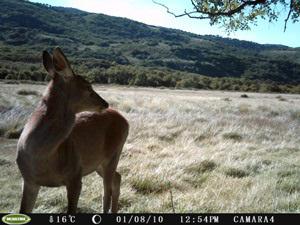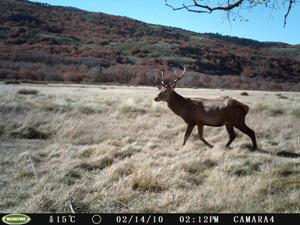Nicolas Ferreyra
Other projects
28 May 2012
Impact of the Red Deer (Cervus elaphus) on High Priority Conservation Native Forest in Patagonia, Argentina II
The aim of the project is to evaluate the population status of red deer and its relationship with the impact to the understory vegetation on native forests at Lanín National Park.

Red deer have been introduced in Patagonia in 1917 and since then they have invaded extent areas from forests in the west to steppe in the east. Particularly at Lanín National Park (LNP) this species occupies an area of 1.250 km2, approximately the 33% of the total LNP area. The aim of the Red Deer Management Plan implemented at LNP is to increase the regeneration of the more susceptible species and to recover the natural condition of the understory on highly priority native forest for northern Patagonia through the reduction of deer numbers. To evaluate the achievement of this aim, we build up a protocol for the monitoring of deer population and its impact to the vegetation. This proposal will allow us to implement these protocols and evaluate the achievements of the Management Plan.

The results of this work will generate the first study in red deer impact on Araucaria (Araucaria araucana), Raulí (Nothofagus nervosa) and Roble pellín (Nothofagus obliqua) forests in Chile and Argentina. These ecosystems are a high priority for conservation efforts in Patagonia. The Araucaria forest occupies only 4% of the overall area of Argentina and Chile forests in the Valdivian Ecoregion. Araucaria was declared National Monument in Chile and was included on CITES Appendix I. The Roble pellín and Raulí forests occupies only 180 km2 and 400 km2 in Argentina and both represent only 1% of the overall regional forests in Argentina.

This work will have three types of outcomes that will make a long-lasting contribution. First, this work will produce scientific empirical information through experimental and comparative designs about the impact of red deer on native forests in relation to the history of invasion as well as to the relative densities of deer population. Second, this work will improve permanently the skills and knowledge of the park rangers and of the stakeholders (hunters and guide hunters) involved in the Red Deer Management Plan. Finally, this project will build-up and establish the permanent monitoring plots and procedures for the long-term evaluation of the impact by red deer to the understory vegetation at valuable native forests and for the monitoring of the deer population trends and therefore, providing the conditions for management decisions in the future. In this ways, this project will support strongly the first and only experience of red deer management within National Parks in Argentina and therefore, through this contribution could be sooner expanded the successful experience to other Protected Areas.